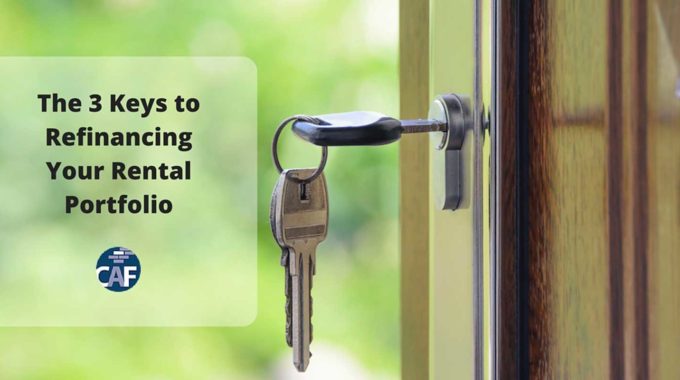The 3 Keys to Refinancing Your Rental Portfolio

by Dennis Spivey, VP
As Real Estate in the US continues to recover from the financial crisis of the mid 2000’s, there has been a steady flow of capital moving back into single family residential investment opportunities. From the fix and flip model, to the long-term rental/hold strategy, we’ve seen a movement back into real estate as a sound investment. The players range from large institutional entities, backed with public and private equity, down to entrepreneurial individuals looking to expand their portfolio through real estate investment loans. As money continues to flow into this channel, lenders have also begun to look for quality financing opportunities. There are now loan options for real estate investors that did not exist 3 or 4 years ago.
As you continue to look to real estate investments to grow your business, it’s important to analyze how using leverage can take you to the next level. The lending partners are out there, but it’s important to know what they are looking for in order to optimize your ability to qualify for rental portfolio loans and expand your business.
#1. Know your Properties.
When considering your options in refinancing your rental portfolio, it’s critical to have current and accurate data on your homes. Acquisition date and price, rehab expenses, current lease information, taxes and insurance, and maintenance costs are just some of the pivotal data points that will drive your financing options. Be sure you have record of year built, size, and any other relevant collateral information. Organize the data in a clean excel file that is easily understandable to the lender.
#2. Know your Values.
Values are extremely important in shaping the size and terms of financing from a lender. While Zillow.com is a powerful tool that you can utilize, combine it with information from other sites like Realtor.com, Redfin.com, and Trulia.com. Create a matrix, and try to use information from various sources to generate a cohesive estimate of current value for each of your rentals.
#3. Organize your Documentation.
Once qualified for a loan, your lender will need to get documentation to support all of the information provided. Create folders on your computer that contain PDF versions of your leases, acquisition information, insurance coverages, personal financials, and any other relevant information. You really have to keep organized when you are thinking about refinancing real estate properties. The more efficient you are with getting providing documentation up front, the quicker and easier your diligence process will be.
CoreVest has created a prolific, streamlined loan process that allows you to tap into debt as an effective, inexpensive way to grow your strategy to finance rental properties. Leverage allows investors of all sizes to optimize growth opportunity. We are an experienced lender, specializing in residential real estate investments. We have loan options for fix and flip buyers as well as long-term rental yield players. We’ve created a loan process that is user friendly with a best in class operations team.
CoreVest is a leading provider of financing solutions to residential real estate investors. We provide attractive long-term debt products for stabilized rental portfolios as well as credit lines for new acquisitions. For more information about how Corevest can help grow your rental and rehab business, please call Dennis Spivey at 310.752.5025 or email [email protected].